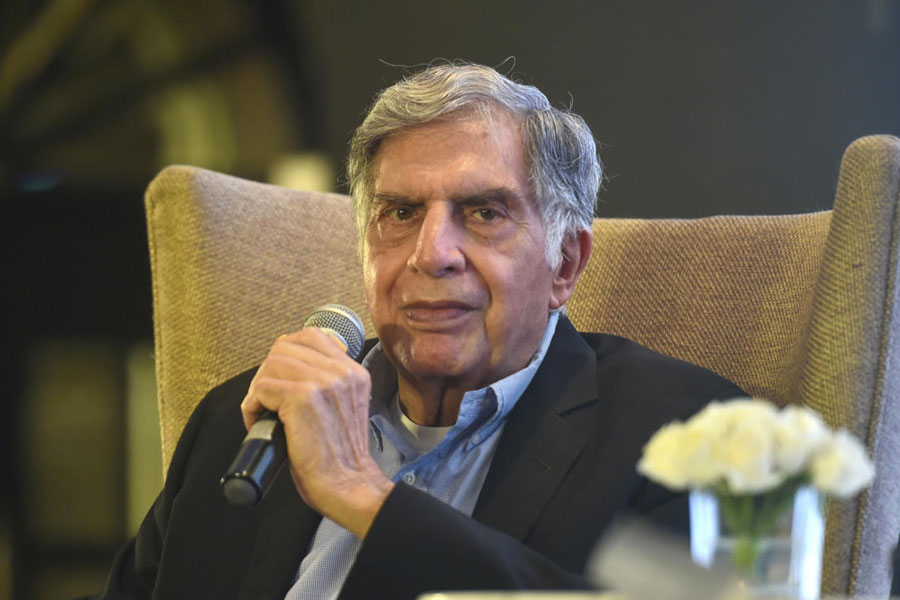Ratan Tata headed the salt-to-software conglomerate for over two decades during which he racked up many triumphs and faced a few tribulations. The glory days for the group began when it started to snap up big deals abroad that firmly put India Inc on the global map — and inspired other Indian tycoons to storm the world.
While the acquisition of Corus Group PLC, the Anglo-Dutch steel maker, for $12.1 billion in 2007 by Tata Steel India was the largest by any Indian corporate, the takeover of marquee British carmaker Jaguar & Land Rover (JLR) could be described as the high point of Ratan Tata’s gambit to take the Tata brand to the international stage.
During his chairmanship between 1991 to 2012, Tata played a pivotal role in taking the $165 billion behemoth abroad, sewing up at least 60 acquisitions including tea brand Tetley, Brunner Mond – the owner of British Salt, and Eight O’ Clock Coffee in the US.
Why did Tata chart a path that no one had the guts and gumption to take before? One reason could be the fact that India was on the cusp of reinventing itself when he took control of the group. Those were the heady days when a looming economic crisis forced then Prime Minister Narasimha Rao to unleash economic reforms in a burst of liberalisation that changed the economic landscape forever.
Suddenly, multinational giants were swarming into the Indian market, forcing domestic enterprises — who were cosseted by protectionist barriers until then — to up their game and square up to competition. India Inc had to quickly get their act together to take on the Big Boys from the US, the Far East, and South East Asia.
Ratan Tata admitted as much in an interview to the BBC in 1997 when India was celebrating 50 years of Independence. Tata said he believed the group would experience considerable competition after the economy opened up. But he also dared to dream of taking the battle to the MNCs on their own turf just when they were preparing to muscle into India.
Tata told the BBC that Indian companies would try to promote their own brands but cautioned that it would be an uphill task. “It’s an expensive proposition, and a proposition most of us have very little experience in. So, it will not be an easy proposition to become a global player. The scale and magnitude of what one has to do to establish (a presence) in the foreign countries is enormous and not known to most of us,” Tata told BBC.
However, he would take the audacious step three years down the line when the then Tata Tea, now Tata Consumer Products, acquired the Tetley Group for $431 million. In 2000, it was the largest overseas acquisition by any Indian firm.
The next bet came from Tata Steel which acquired NatSteel, Singapore, in 2004 for $283.7 million — and quickly followed this up with the buyout of Millennium Steel in Thailand for $404 million a year later. That was also the time when Posco and ArcelorMittal were sniffing around for opportunities in India. They would soon realise that building a steel plant from the ground up in India was the hardest challenge that they would ever face: Posco has yet to build an integrated steel plant here and ArcelorMittal was able to enter India more than a decade later when it acquired Essar Steel in 2018.
Later in 2005, Tata Chemical went to shop, again in the UK, acquiring Brunner Mond for ₹508 crore. But the biggest bet came in 2007 when Tata Steel acquired Corus by trumping Brazil’s CSN in a reverse auction, which went on for several bidding rounds. After this, Tata Motors took over Jaguar Land Rover in 2008 from Ford Motor for $2.3 billion.
But dark clouds had started to gather: the collapse of Lehman Brothers in September 2018 and the subsequent meltdown in the global financial market turned conventional business wisdom on its head. Austerity became the name of the game as companies cut back sharply on spending. Almost overnight, the fortunes of those companies that had ventured abroad sank as they saw their overseas bets flounder.
Years later, Tata spoke at Stanford Graduate School of Business about the ‘pluses and minuses’ of going global. In 2013, a year after stepping down as the chairman of Tata Sons, he acknowledged, “We didn’t ever foresee that Europe would go through a downturn and that is where our major investments lay.” However, he did back the decision terming it a ‘need to grow’ and operate in a different ‘economic cycle.’
The financial crisis and European downturn hit Corus (later renamed Tata Steel Europe) very hard; it earned operational profits in only two years after the buyout. Tata Steel, the Indian parent, had to support the business right through the years and it is still not out of the woods yet.
In contrast, the JLR bet has mostly paid off, in part thanks to a sudden interest from China for luxury cars. It remained profitable for the most part under Tata Motors, barring a few years, and can be labelled as the cornerstone of Tata’s overseas play.
The European downturn forced the Tata group to double down on India which is often described as the bright spot among major economies. Irrespective of Ratan Tata’s legacy, it looks certain to stay that way in the years to come.










